Are you navigating the complexities of construction agreements and wondering how to handle lien releases? Understanding the importance of a construction lien release can save you time, money, and legal headaches down the line. In this article, we'll break down the key elements of a construction lien release letter template, ensuring you have the right tools at your disposal to protect your interests. So, let's dive in and equip you with the knowledge to master this essential document!
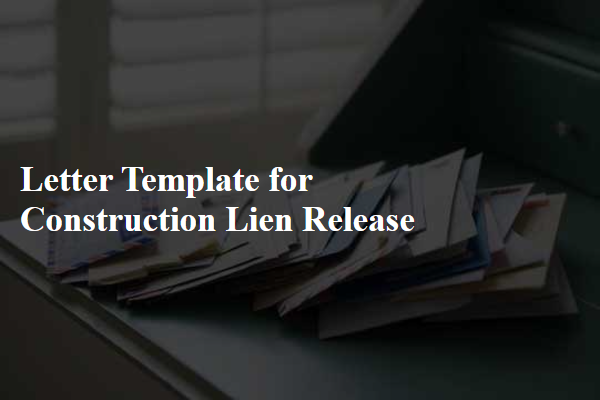
Project Information and Details
A construction lien release document should detail specific project information to ensure clarity and legal compliance. This includes project name, such as "Maple Grove Residential Development," project address like "1234 Oak Lane, Springfield, IL," and project owner's name, e.g., "John Smith." Relevant dates should also be provided, including the commencement date of the project, which might be "March 1, 2023," and the completion date, such as "August 15, 2023." Additionally, contractor details are essential, including the contractor's business name and license number. Any lien claimant's information, such as the material supplier or subcontractor's name along with their address, should also be included. Noteworthy figures may cover the total cost of the project, potentially "around $500,000," and details about any previous liens filed, emphasizing the need for the release in question. The document should conclude with signatures from authorized parties to validate the release.
Claimant's Identification and Contact Information
A construction lien release document is essential in real estate transactions. It serves to eliminate or waive any claim of a lien on a property by a contractor, subcontractor, or supplier upon receiving payment for services rendered. The Claimant's Identification entails detailed information about the individual or business making the claim, including their full name, business name if applicable, address, phone number, and email for contact. This ensures clear identification of parties involved in a construction project, enhancing transparency and legal security for property owners (often homeowners or commercial developers) in specific locations, such as Los Angeles (California) or New York (New York), where lien laws can vary significantly. Accurate documentation helps prevent disputes and fosters trust between contractors and property owners.
Property Description and Legal Information
A construction lien release is an essential document within the construction industry, particularly when it pertains to the resolution of financial obligations among contractors, subcontractors, and property owners. The property description typically identifies specific details such as the property address (including street number, street name, city, and state), and legal information often encompasses the parcel number or lot number associated with the property. Legal descriptions might reference plat maps or surveys, detailing exact boundaries and measurements recognized by locality. This documentation protects all parties involved by affirming that all contractual agreements have been fulfilled and that there are no remaining financial claims against the property. It's critical for ensuring a clear title for future transactions, safeguarding property owners against potential litigation related to unpaid liens.
Lien Release Statement and Authorization
A Lien Release Statement and Authorization serves to formally release a property from a construction lien, ensuring that the contractor or lien claimant has received full payment for services rendered. A lien, often placed on properties in various states like California or Texas, is a legal claim against a property for unpaid work. This document typically includes essential details such as the project address (which specifies the location of the construction), the date of service completion (critical for establishing timelines), and the total amount paid (reflected in invoices) to satisfy the lien. The statement typically also contains a notarization section to validate the authenticity of the release, ensuring that both parties are in agreement under applicable state laws, which can vary significantly across jurisdictions.
Signatures and Notarization Details
A construction lien release is an important legal document that signifies the relinquishment of any claims against a property due to non-payment for services rendered. This document typically requires the signatures of all parties involved, including the contractor and property owner, to validate the release. Notarization plays a crucial role in this process, as a notary public must oversee the signing to ensure authenticity and prevent fraud. Essential details include the property's address, the date of the release, and a clear statement indicating that the lien has been fully satisfied. Accurate execution of this document protects all parties, promoting trust and transparency in construction transactions.

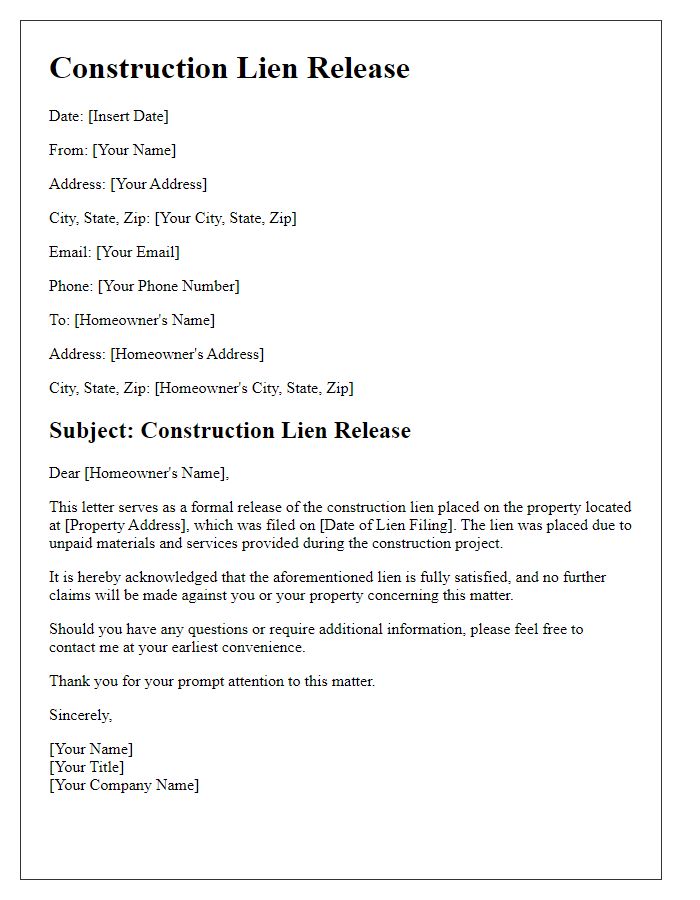
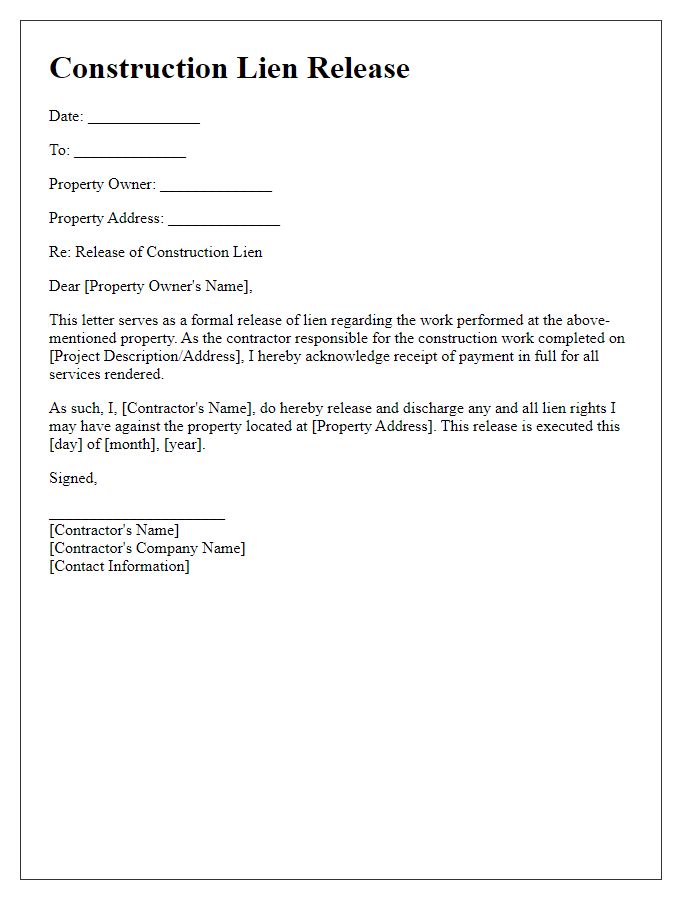
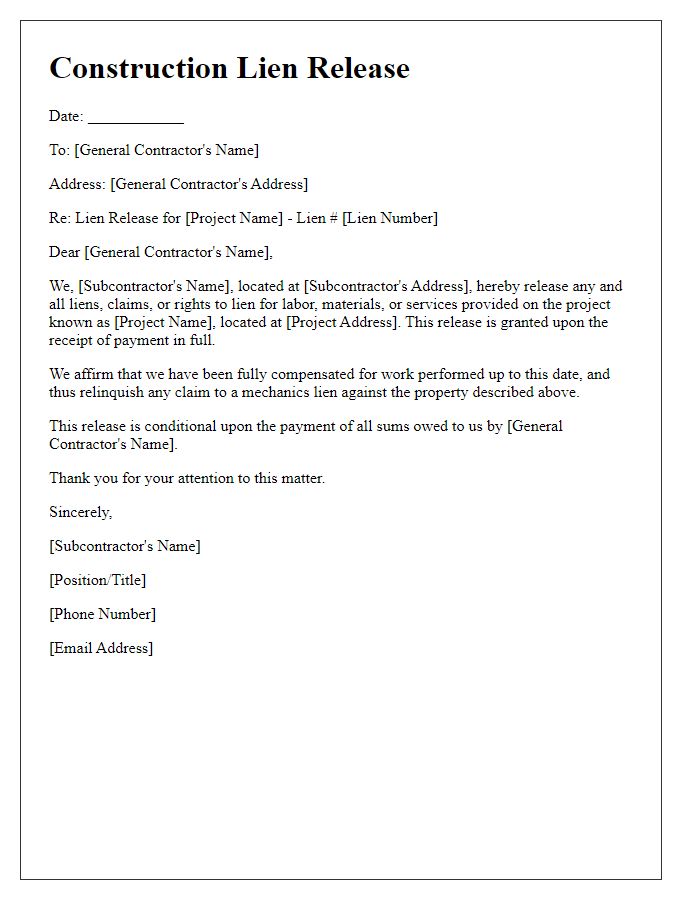
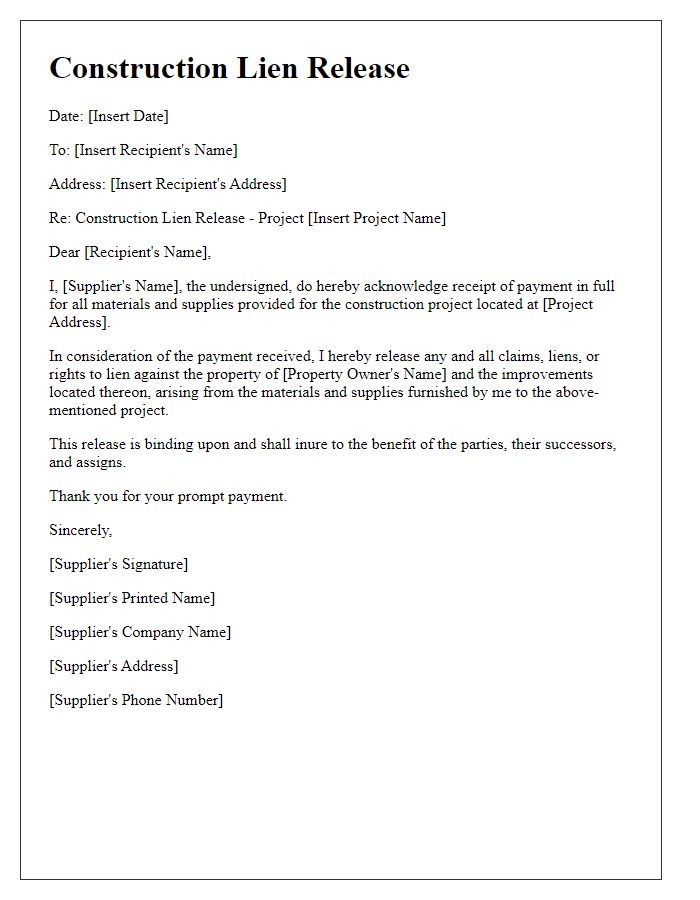
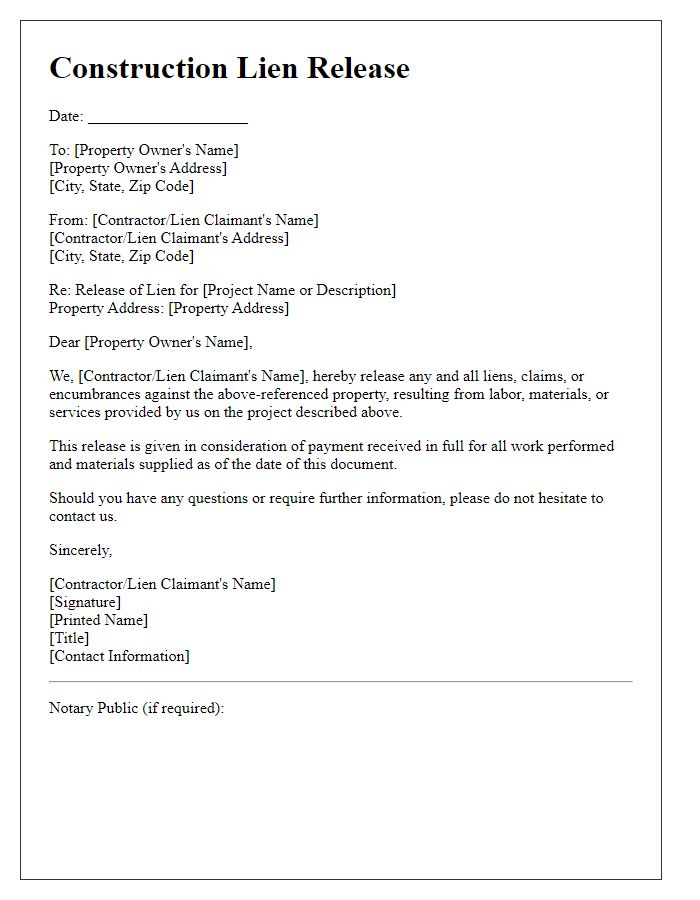
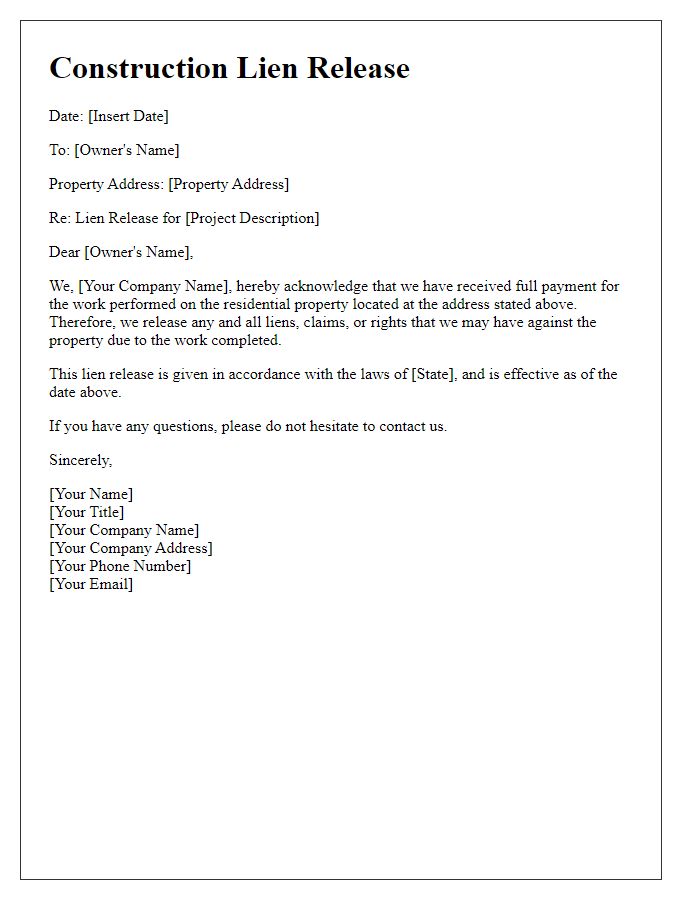
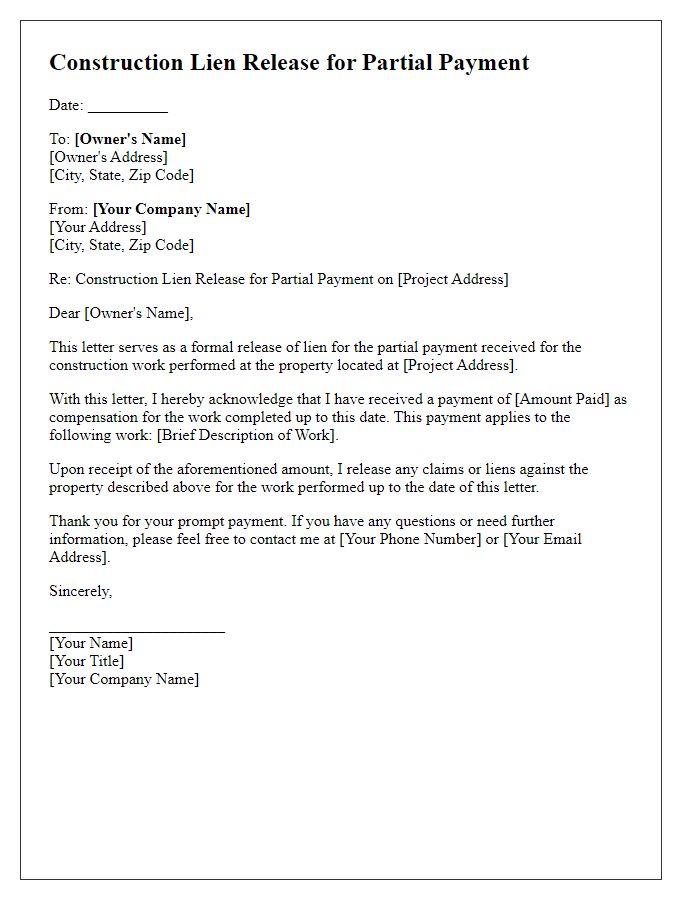
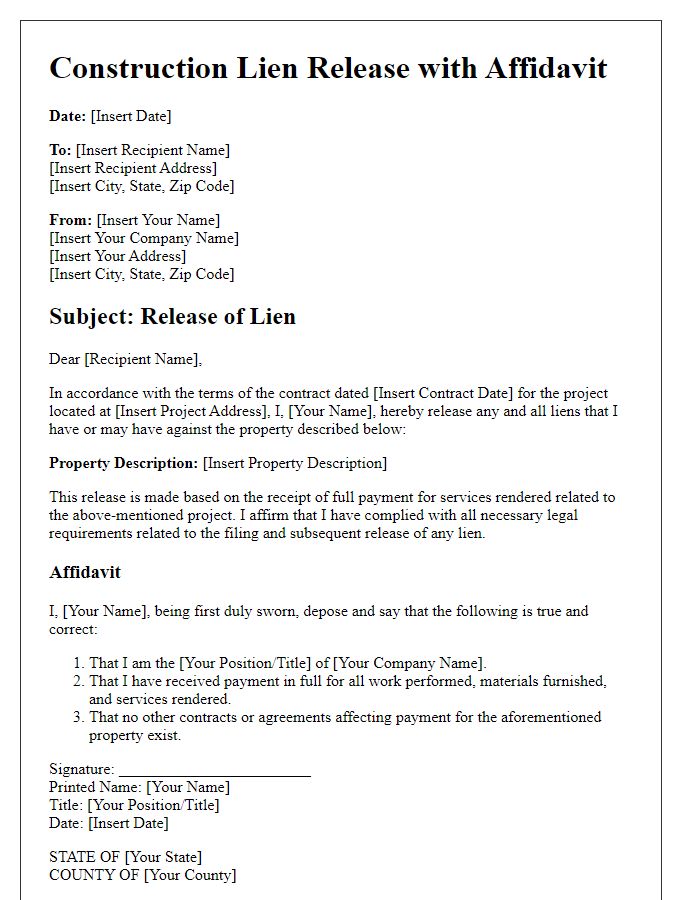
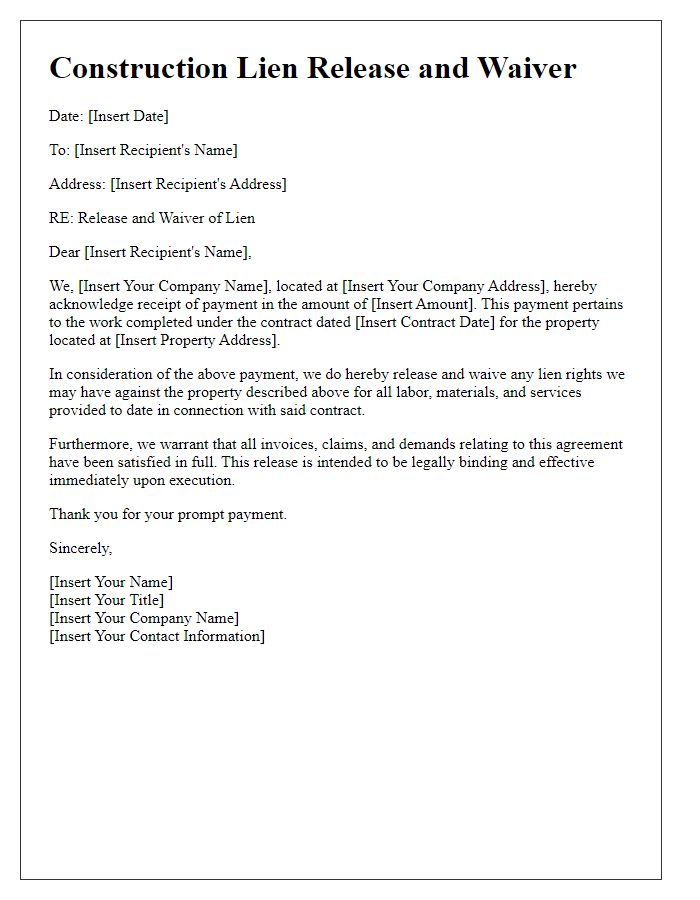
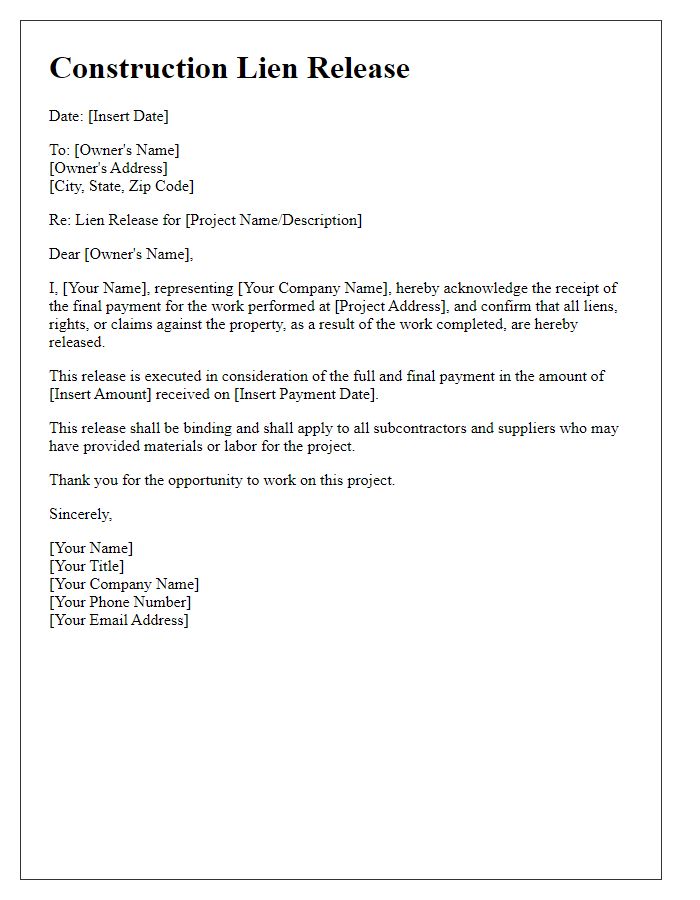

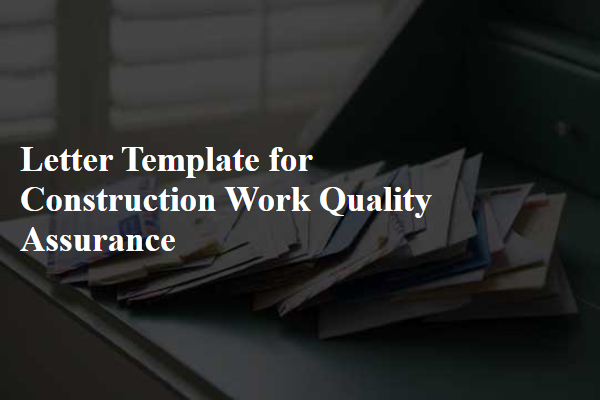
Comments